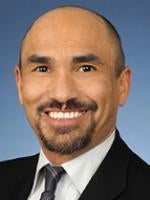There are several recent developments in California and in the Los Angeles region affecting the funding of urban redevelopment and the creation of affordable housing. First, the California Legislature passed, and Governor Jerry Brown signed into law, the Community Revitalization and Investment Authority Law, which once again allows for local governments to establish redevelopment authorities to fund improvements to infrastructure, promote economic revitalization and address shortages in needed housing. In addition, the Los Angeles County Board of Supervisors recently voted to set aside up to $100 million-a-year in a dedicated Affordable Housing Program budget. Finally, Los Angeles Mayor Eric Garcetti proposed new "linkage fees" on developers to raise more than $100 million-a-year for affordable housing.
California Community Revitalization and Investment Authority Law Once Again Allows for Redevelopment Authorities
As part of the 2011 Budget Act, the California Legislature approved the dissolution of the state's 400-plus redevelopment agencies. After a period of litigation, the agencies were officially dissolved as of February 1, 2012. As a result of the elimination, property tax revenues are being used to make required payments on existing bonds, other obligations and pass-through payments to local governments. The remaining property tax revenues that exceed the enforceable obligations are being allocated to cities, counties, special districts, and school and community college districts. To help facilitate the winding down process at the local level, successor agencies were established to manage redevelopment projects currently underway, make payments on enforceable obligations and dispose of redevelopment assets and properties.
Signed into law by Governor Brown on September 22, 2015, the California Community Revitalization and Investment Authority Law (Community Redevelopment Law or law) once again allows communities to establish redevelopment authorities to address blight and shortages in affordable housing using property tax financing. The law allows a city, county, city and county, or special district ("local agency")—or any combination of these entities—to establish a Community Revitalization and Investment Authority (CRIA) in specified "revitalization areas" to improve infrastructure, promote economic revitalization and create and preserve needed housing. The stated intent of the law is to "invest property tax increment revenue to relieve conditions of unemployment, reduce high crime rates, repair deteriorated or inadequate infrastructure, promote affordable housing and improve conditions leading to increased employment opportunities." Under the new law, 25 percent of all funds allocated to the authority must be placed in a low- and moderate-income housing fund and be used solely for the purpose of increasing and preserving the supply of affordable housing.
A revitalization area must include at least 80 percent of land that has an annual household income that is less than 80 percent of the statewide annual median income, as well as three of the following criteria: (1) unemployment rate at least 3 percent higher than the statewide median, (2) crime rates at least 5 percent higher than the statewide median, (3) deteriorated or inadequate infrastructure, and (4) deteriorated commercial or residential structures. Alternatively, a CRIA may carry out a community revitalization and investment plan within a former military base that is principally characterized by deteriorated or inadequate infrastructure and structures. A CRIA is required to adopt a 10-year "community revitalization and investment plan" which describes its intended redevelopment activities. The plan must include a statement of principle goals and obligations. The CRIA must review its plan annually and prepare a publicly available annual report.
The authority of a CRIA is similar to the former redevelopment agencies and includes:
-
the power to acquire and transfer real property through eminent domain;
-
provide funding to rehabilitate, repair, upgrade and construct infrastructure;
-
increase the supply of affordable housing;
-
remedy or remove releases of hazardous substances;
-
provide for seismic retrofitting;
-
issue bonds;
-
borrow money and receive grants or accept other financial assistance or investment;
-
make loans or grants to owners and tenants;
-
provide foundations for air rights; and
-
provide direct assistance to businesses.
A CRIA finances its activities by the issuance of bonds serviced by property tax increment revenues and is subject to periodic audits by the Controller. CRIA funds must be expended within the 10-year period of the revitalization plan, although there are shorter time requirements for expenditure of funds that qualify as "excess surplus" and which shall be separately accounted for and may be the subject of a separate plan developed by the CRIA. As stated above, a minimum of 25 percent of all tax increments allocated to the CRIA must be deposited into a separate low- and moderate-income housing fund. These funds may be used to acquire or improve real property, donate property, construct, acquire or rehabilitate buildings, provide subsidies to low income households, pay principal and interest on bonds, loans, advances or other indebtedness, maintain the community's supply of mobile homes, preserve the availability of existing affordable housing units, among other affordable housing-related activities. The law requires the Department of Housing and Community Development to periodically review the calculation of surplus housing under these provisions. Rental units assisted by the CRIA must remain affordable for at least 55 years. Owner-occupied units must remain affordable for at least 45 years. Any local agency that collects ad valorem property tax from property located within the revitalization area may allocate its share of property tax increments to the CRIA.
The Community Redevelopment Law has stringent establishment requirements. In order to create a CRIA, a local agency must ensure that any successor agency has obtained a finding of completion from the Department of Finance and has complied with all orders of the state Controller's office regarding the transfer of former redevelopment agency assets. A local agency cannot create a CRIA if the local agency or successor agency is a plaintiff in active litigation against the state involving redevelopment assets. School districts cannot establish or participate in a CRIA, including in the funding of a CRIA. However, if an area meets the law's stringent establishment requirements, a CRIA has broad authority and methods to revitalize a blighted area are very similar to the powers of the former redevelopment agencies.
Los Angeles County Board of Supervisors Vote to Gradually Set Aside $100 Million-a-Year for Affordable Housing Programs
To address growing homelessness and the extreme shortage of affordable housing in the region, the Los Angeles County Board of Supervisors voted unanimously on October 27, 2015 to gradually set aside up to $100 million-a-year in a dedicated Affordable Housing Program budget unit within the County General Fund to construct, maintain and subsidize affordable housing. The County will initially identify $20 million in funds in fiscal year 2016–17, with a goal of reaching $100 million-per-year by fiscal year 2020–21. A minimum of 75 percent of the funds will be dedicated for the preservation, rehabilitation and creation of affordable housing. The remaining funds will be used to cover administrative expenses and for rental and moving assistance. Supervisors Sheila Kuehl and Mark Ridley-Thomas proposed the fund as prior affordable housing programs were severely curtailed by the February 2012 dissolution of redevelopment agencies. County and City of Los Angeles officials have showed a heightened interest in homelessness since this year's countywide count by the Los Angeles Homeless Services Authority showed a 12 percent jump—to 44,000—in the number of homeless people over the last two years.
Further, the County will establish an Affordable Housing Coordinating Committee to evaluate all County housing programs, document progress on achieving regional housing needs and provide guidance on needed policy changes. The Committee will also be tasked with specifically evaluating the housing needs of priority populations, including low income families, seniors, the homeless, transition age youth, people exiting jails, child-welfare involved families, extreme low income persons with physical disabilities, veterans, domestic violence survivors and users of County health and social service programs. Finally, the motion requires that Community Development Commission (CDC) to prepare a report within 150 days that provides the recommended policy or administrative actions needed to facilitate the effective use of the CDC's Affordable Housing Program resources.
City of Los Angeles Proposes Developer Linkage Fees to Meet Affordable Housing Needs
On October 23, 2015, Los Angeles Mayor Eric Garcetti proposed new fees on developers that could raise more than $100 million-a-year to subsidize affordable housing. Speaking at a conference at UCLA hosted by the Los Angeles Business Council, Mayor Garcetti said his administration will lead an effort to levy "linkage fees" on developers based on the size of new projects in the City. Such assessments are intended to offset upward pressure on housing costs from new commercial or residential development. According to the mayor's staff, the details of the proposal—such as the amount, how the fees would be calculated and what types of projects would be assessed—have not yet been worked out and will be the subject of a study by the City Planning Department. Any new fees would be subject to approval by the City Council.
Linkage fees are already being levied or considered in such cities as San Francisco and Seattle. Cities can levy linkage fees only after demonstrating that a development will generate a spike in housing demand. City Controller Ron Galperin recently conducted an audit that found that the Los Angeles could have potentially taken in $15 million to $91 million for fiscal year 2013–14, given levels of construction. This is consistent with a 2011 study, which found that a linkage fee a could generate up to $110 million-a-year. The mayor's announcement comes as the region is experiencing a surge in homelessness and a severe shortage of affordable housing.






 />i
/>i

